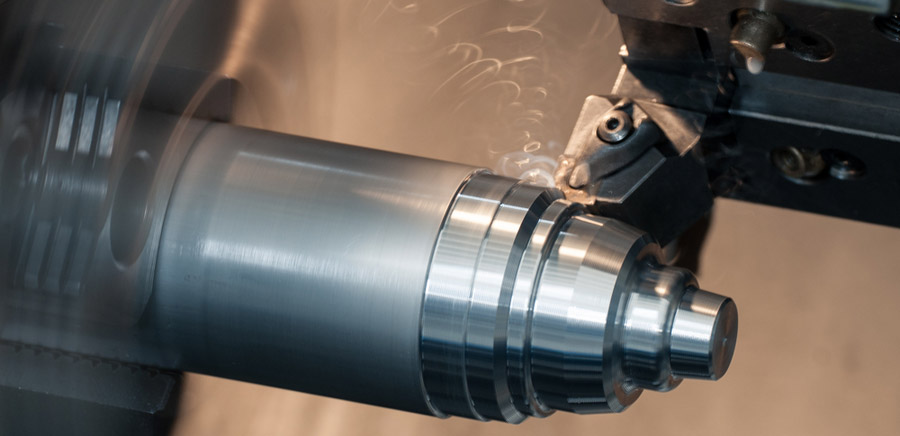Turning is a fundamental machining process used to create cylindrical parts, remove material, and achieve precise dimensions. When it comes to turning operations, manufacturers often face the choice between CNC turning and manual turning. Both methods have their advantages and drawbacks, and selecting the right one for your project depends on several factors, including the complexity of the part, production volume, and desired precision. In this post, we’ll explore the differences between CNC turning and manual turning, and provide guidance on how to choose the best method for your machining needs.
Understanding CNC Turning and Manual Turning
CNC Turning:
CNC turning involves the use of automated, computer-controlled lathes to shape metal or other materials. The CNC lathe follows programmed instructions, allowing for high precision, repeatability, and efficiency. CNC turning is ideal for complex parts and large production runs, as it can handle intricate geometries and produce identical parts consistently.
Manual Turning:
Manual turning, on the other hand, is performed on traditional lathes operated by skilled machinists. The machinist manually controls the cutting tools, feeds, and speeds to shape the material. Manual turning is generally suited for simpler parts, low-volume production, and one-off jobs where the flexibility and hands-on control of a machinist are advantageous.
Key Factors to Consider When Choosing Between CNC Turning and Manual Turning
Complexity of the Part:
CNC Turning:
Best suited for complex parts with intricate geometries, tight tolerances, and detailed features. CNC machines can execute sophisticated designs that would be difficult or impossible to achieve manually.
Manual Turning:
Suitable for simpler parts with basic shapes and less demanding tolerances. If the part requires straightforward operations, manual turning may be sufficient and cost-effective.
Production Volume:
CNC Turning:
Ideal for medium to high-volume production. Once the CNC machine is programmed, it can produce large quantities of parts with consistent quality and minimal variation, making it highly efficient for repetitive tasks.
Manual Turning:
More appropriate for low-volume production, prototypes, or custom one-off parts. Manual turning allows for quick adjustments and modifications, which can be advantageous in small-scale projects.

Precision and Tolerance Requirements:
CNC Turning:
Offers superior precision and repeatability, making it the preferred choice for parts with tight tolerances. CNC machines can maintain consistent quality throughout long production runs.
Manual Turning:
While skilled machinists can achieve good precision, maintaining consistent tolerances across multiple parts is more challenging. Manual turning may not be the best option for parts with stringent precision requirements.
Setup Time and Lead Time:
CNC Turning:
Requires programming and setup time upfront, but once the setup is complete, the production process is fast and efficient. CNC turning can significantly reduce lead times for large production runs.
Manual Turning:
Typically has shorter setup times for simple parts, but the actual machining process may be slower, especially for complex geometries. Manual turning is often quicker for one-off parts or very small batches.
Cost Considerations:
CNC Turning:
The initial setup and programming can be more expensive, but the per-part cost decreases significantly for larger volumes. CNC turning is cost-effective for high-volume production and complex parts.
Manual Turning:
Generally has lower initial costs and can be more economical for small quantities or less complex parts. However, as production volume increases, the cost advantages of CNC turning become more apparent.
Flexibility and Customization:
CNC Turning:
While CNC machines offer flexibility in terms of part complexity, making real-time adjustments on the fly can be cumbersome and time-consuming, as it requires reprogramming.
Manual Turning:
Allows for greater flexibility and real-time customization during the machining process. Machinists can make immediate adjustments to the cutting tools, speeds, and feeds, making it ideal for custom or evolving designs.
Skill Level and Labor Costs:
CNC Turning:
Requires operators with knowledge of CNC programming and machine operation. While CNC machines reduce the dependency on highly skilled manual machinists, they still need trained personnel for setup and maintenance.
Manual Turning:
Heavily relies on the skill and experience of the machinist. Finding and retaining skilled manual machinists can be challenging, and labor costs may be higher due to the specialized skills required.
Conclusion: How to Choose?
Choosing between CNC turning and manual turning depends on your specific project requirements. For complex parts, tight tolerances, and large production volumes, CNC turning is generally the better choice due to its precision, efficiency, and repeatability. On the other hand, for simple parts, low-volume production, or projects that require real-time customization and flexibility, manual turning may be more suitable.
Ultimately, evaluating the complexity, volume, precision requirements, and cost considerations of your project will guide you in selecting the most appropriate turning method. By understanding the strengths and limitations of each approach, you can optimize your machining process and achieve the best results for your manufacturing needs.



